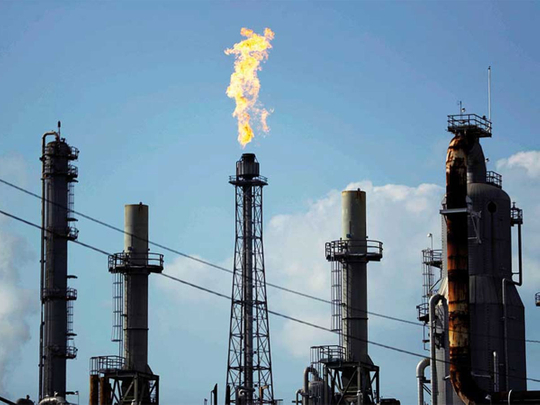
DUBAI: The fall in Brent crude prices does not tell the full story … here’s why.
Brent crude shed more than 13 per cent in May, the sharpest drop so far this year, amid concerns that demand would take a beating if trade wars persists. But this rationale ignores a fundamental dynamic of the physical market for oil, that it remains undersupplied.
Supply concerns are mounting from Venezuela and Iran, where production tumbled to its lowest since 1990 due to US sanctions. Iran’s production tumbled to 230,000 barrels a day to 2.32 million a day.
These production concerns resulted in a “backwardation” in six-month Brent crude futures surging to the highest level in over five years at $3.31 in May, breaching the 2018 peak of $3. On Thursday, the near-month Brent for August delivery traded at $60.67 per barrel, a premium of $2.48 compared to the pricing of the January contract, which was at $58.19 per barrel.
“Backwardated spreads usually mean tightness in the underlying physical market,” said Tamas Varga, oil broker and analyst at PVM Oil Associates Ltd. “I believe this will last as long as there are unintended supply disruptions from countries like Russia, Iran and Venezuela.” told Gulf News.
Giovanni Staunovo, commodities analyst at UBS, said the backwardation impact has been less extreme in recent weeks. “On the spread side, for Brent it is primarily driven by North Sea maintenance and Russian pipeline-related disruptions. Once these problems ebb, the structure might start to weaken.
“I still believe Opec production cuts will keep the market tight and allow to stay in backwardation, but less extreme as in recent weeks.”
Among other factors weighing on Brent prices are the wider than expected oil inventories in the US and rising shale production. Analysts feel prices may recover going forward even as traders brace for the upcoming Opec+ meeting.
Opec+ countries decided to reduce cumulative supply by 1.2 million barrels per day from January 1, but giving exemptions to Iran, Libya and Venezuela. Opec members contribute to 50 per cent of global supplies.
Opec is scheduled to meet on June 25, followed by talks with its allies led by Russia on June 26.
“I think the Opec production cuts will be extended, unchanged,” said Staunovo. “The main driver is lower prices, but they will mention (US) inventories’ rising as an argument to extend. Obviously they might keep some flexibility, saying they could adjust volumes if the market requires so.” He expects Brent prices to touch $75 per barrel in three months, a 25 per cent surge from the current $60 plus.












